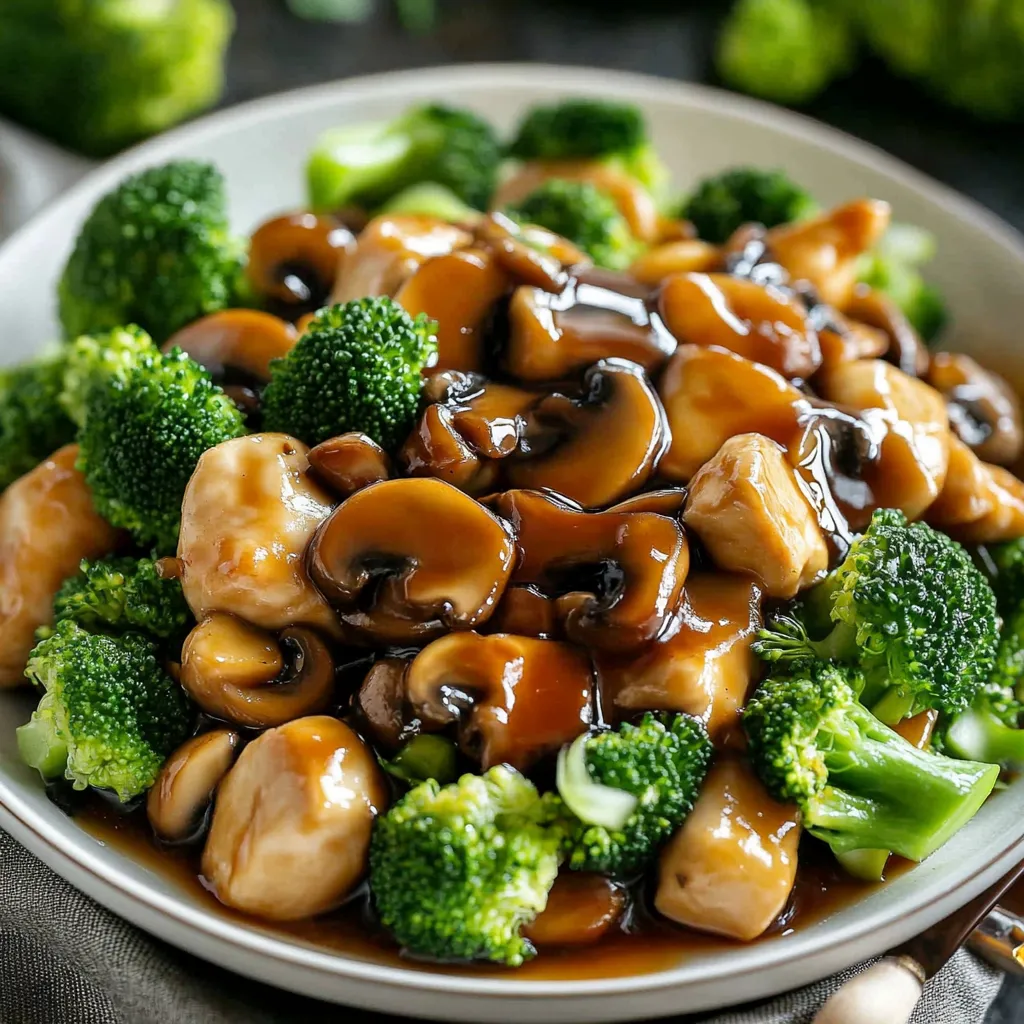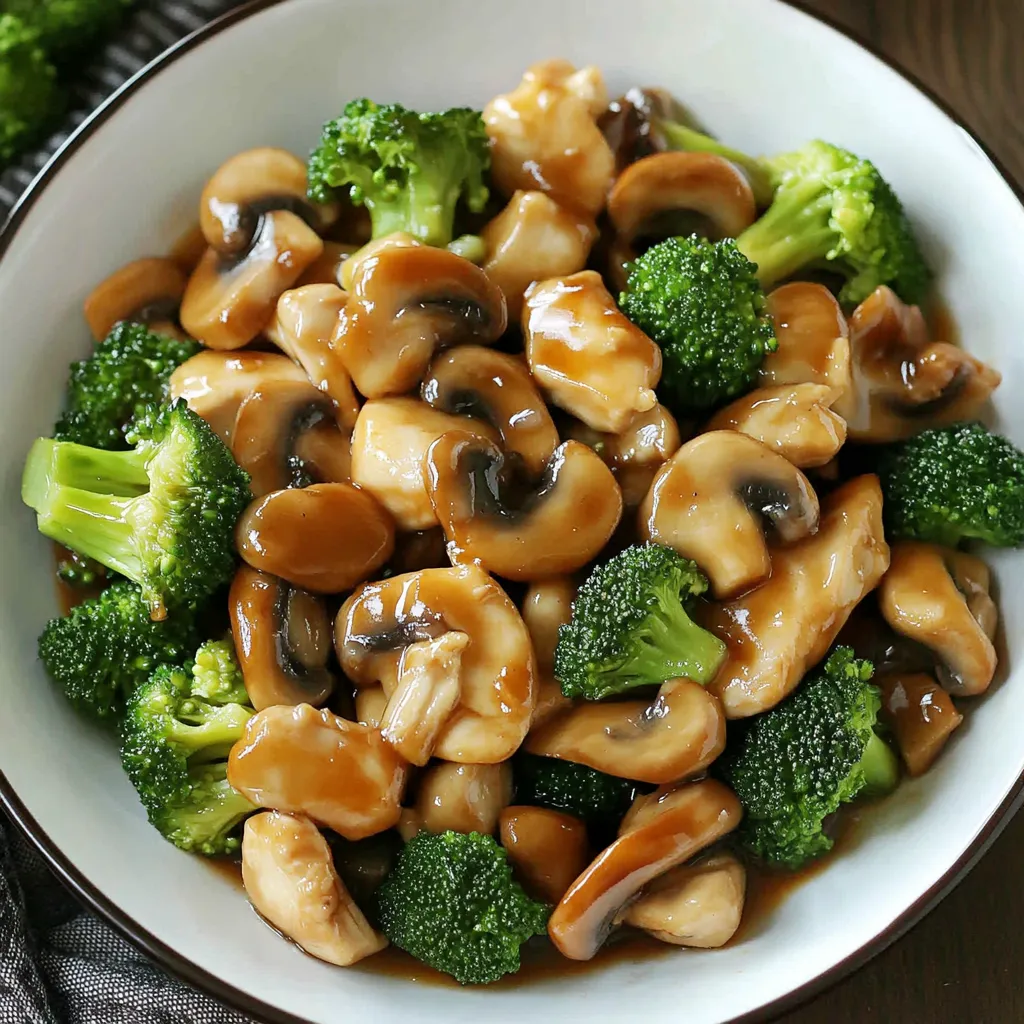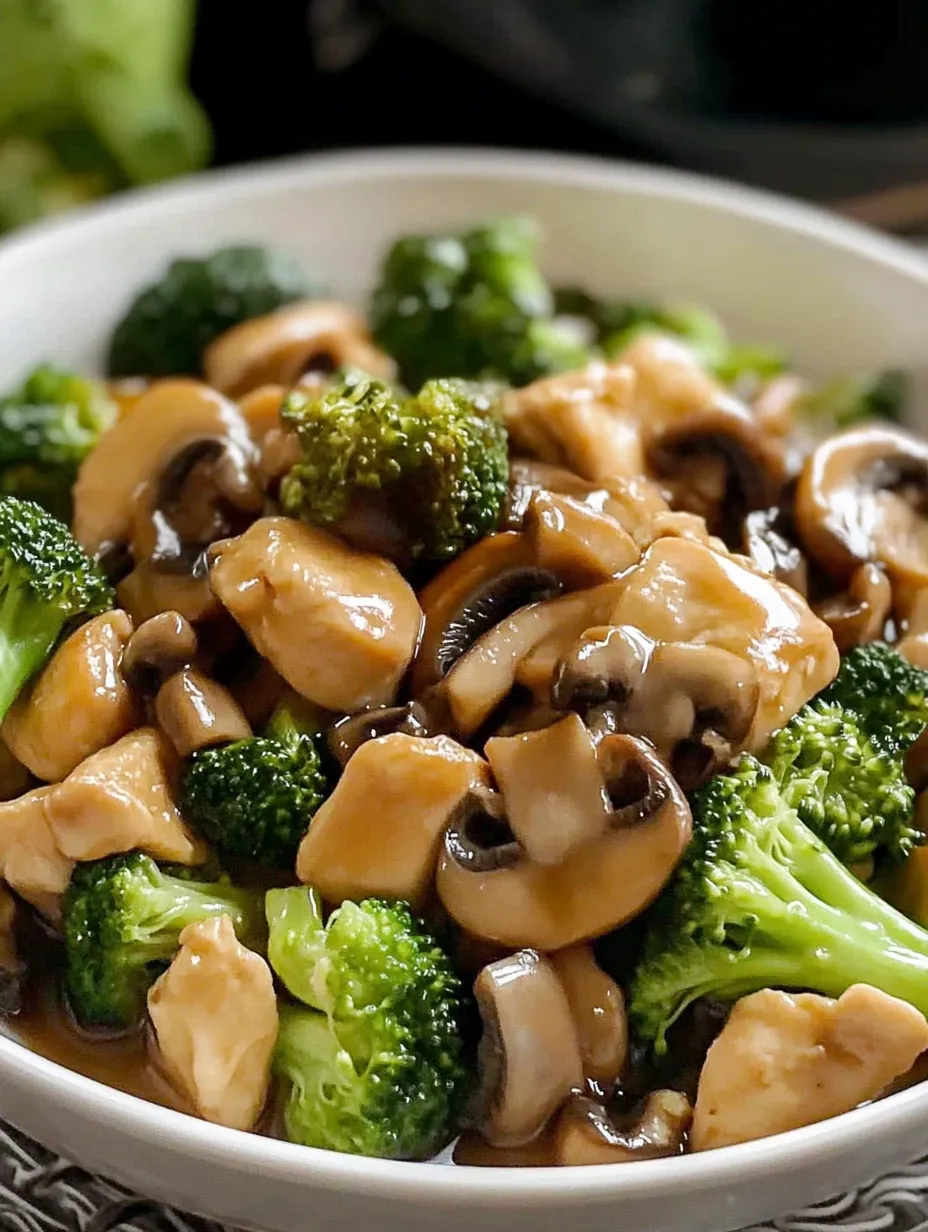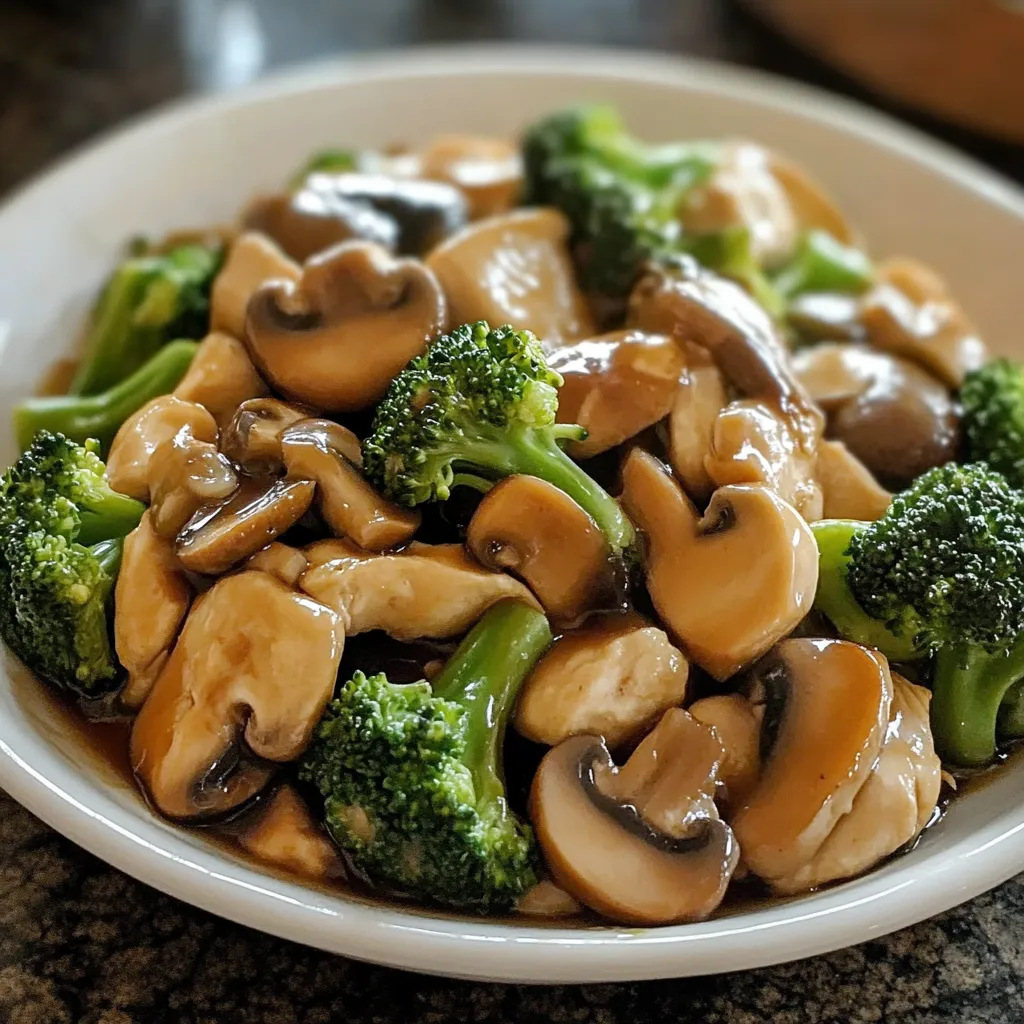 Pin it
Pin it
This velvety Moo Goo Gai Pan transforms ordinary chicken and vegetables into a restaurant-quality dish right in your own kitchen. The tender chicken pieces and crisp vegetables come together in a silky, savory sauce that perfectly balances flavors and textures.
I discovered this recipe when trying to recreate my grandmother's version that I remembered from childhood. After several attempts tweaking the sauce ingredients, my family now requests this dish weekly, claiming it's even better than our local Chinese restaurant.
Ingredients
- Boneless chicken breast: Creates the tender protein base for this dish and stays moist when quickly stir fried at high heat
- Fresh mushrooms: Provide an earthy flavor that anchors the dish
- Straw mushrooms: Add variety in texture with their unique springy quality
- Broccoli florets: Absorb the delicious sauce while providing color and nutrition
- Water chestnuts: Contribute essential crunch that contrasts with the softer ingredients
- Bamboo shoots: Offer a subtle flavor and interesting texture element
- Garlic: Forms the aromatic foundation that flavors the oil
- Oyster sauce: Delivers that authentic umami richness that distinguishes restaurant-quality dishes
- Rice wine: Adds complexity and helps tenderize the chicken
- Cornstarch: Creates that signature silky texture in the sauce that clings to every ingredient
How To Make Moo Goo Gai Pan
- Prepare the vegetables:
- Wash and chop all vegetables before beginning. For the broccoli, cut into bite-sized florets that will cook quickly. Slice fresh mushrooms evenly for consistent cooking. Drain and rinse canned ingredients to remove excess sodium. Having everything ready before heating the wok ensures nothing overcooks while you search for ingredients.
- Stir fry the vegetables:
- Heat your wok until it just begins to smoke before adding oil. This prevents sticking and creates that authentic wok hei flavor. Keep vegetables constantly moving with your spatula to prevent burning. Look for the broccoli to turn bright green with slight tenderness while still maintaining some crunch. Remove promptly to prevent overcooking.
- Cook the chicken:
- After wiping the wok clean, get it smoking hot again before adding fresh oil. The garlic needs only a few seconds to release its aroma without burning. Add chicken in a single layer allowing it to sear before stirring. When chicken turns white with slight golden edges, it's perfectly cooked through but still juicy and tender.
- Create the sauce:
- The cornstarch slurry must be thoroughly mixed before adding to prevent lumps. Pour it around the edges of the wok rather than directly onto hot spots. Keep stirring constantly as sauce thickens to ensure smooth consistency. The sauce should coat the back of a spoon when ready but still flow easily.
- Combine and serve:
- When returning vegetables to the wok, fold gently rather than stirring vigorously to preserve their texture and appearance. Allow everything to heat through completely but avoid overcooking. The finished dish should have vibrant colors, indicating fresh vegetables that haven't been cooked into submission.
 Pin it
Pin it
The bamboo shoots are truly my secret weapon in this recipe. They add such a unique crunch and subtle flavor that elevates the entire dish. My daughter used to pick them out until I challenged her to a taste test comparing versions with and without them. She's now their biggest advocate and helps slice them when we prepare this family favorite.
Authentic Ingredients Matter
Oyster sauce provides the distinct umami base that makes this dish taste authentic. While you might be tempted to substitute it, nothing quite replaces its complex flavor profile. Look for premium brands like Lee Kum Kee or Kikkoman which offer rich color and texture without artificial ingredients. A good quality oyster sauce should be thick, glossy and have a deep brown color. Once opened, store in the refrigerator where it keeps for months, making it a worthwhile pantry staple for Asian cooking.
 Pin it
Pin it
Serving Suggestions
Serve this colorful dish over steamed white rice to soak up the delicious sauce. For a lower carb option, cauliflower rice works beautifully without compromising the experience. Add a side of hot and sour soup for a complete Chinese restaurant experience at home. For entertaining, pair with spring rolls and dumplings for an impressive Asian feast. The neutral flavors in this dish make it appealing even to picky eaters while still satisfying more adventurous palates.
Perfect Protein Options
While chicken breast is traditional, this versatile recipe welcomes many protein substitutions. Thinly sliced pork tenderloin creates an equally delicious variation with slightly richer flavor. For seafood lovers, large shrimp cook even more quickly than chicken and absorb the sauce beautifully. Vegetarians can substitute firm tofu cut into cubes and lightly fried before adding to the sauce. Whatever protein you choose, slice against the grain and in uniform pieces to ensure even cooking and maximum tenderness.
 Pin it
Pin it
Storage Tips
Store any leftovers in an airtight container in the refrigerator for up to three days. The flavors actually develop overnight making next day leftovers especially delicious. When reheating, add a tablespoon of water to restore moisture and prevent drying. Microwave on medium power or gently rewarm in a pan on the stovetop. While you can freeze this dish, the texture of the vegetables will soften upon thawing, so it's best enjoyed fresh or refrigerated.
Frequently Asked Questions
- → What is Moo Goo Gai Pan?
Moo Goo Gai Pan is a classic Cantonese dish typically made with chicken, mushrooms, and a medley of fresh vegetables stir-fried in a flavorful, light sauce.
- → What vegetables work well in Moo Goo Gai Pan?
Popular vegetables include broccoli, mushrooms, bamboo shoots, water chestnuts, and snow peas, but you can customize based on your preferences.
- → How do I keep the chicken tender during cooking?
Marinate the chicken in a little cornstarch, soy sauce, and rice wine before stir-frying to lock in moisture and enhance tenderness.
- → Can I make this dish vegetarian?
Yes! Replace the chicken with tofu or additional vegetables and substitute vegetable broth for chicken broth.
- → What pairs well with Moo Goo Gai Pan?
This dish pairs well with steamed white or brown rice, fried rice, or even thin noodles for a complete, hearty meal.
